1、接口规范
@FunctionalInterface
public interface SpringBootExceptionReporter {
/**
* Report a startup failure to the user.
* @param failure the source failure
* @return {@code true} if the failure was reported or {@code false} if default
* reporting should occur.
*/
boolean reportException(Throwable failure);
}
2、进入run方法
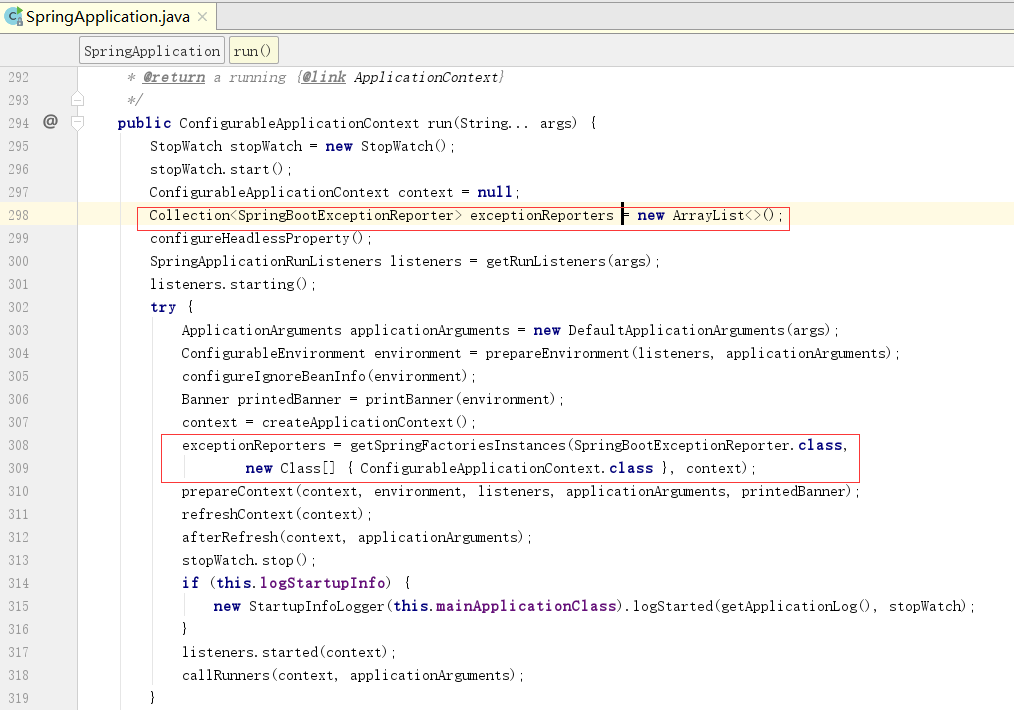
3、进入getSpringFactoriesInstances方法。用来获取spring.factoryies中类型为SpringBootExceptionReporter的配置。

Spring.facories中对SpringBootExceptionReporter的配置如下

4、然后使用createSpringFactoriesInstances创建实例

创建实例的方法如下BeanUtils.instantiateClass
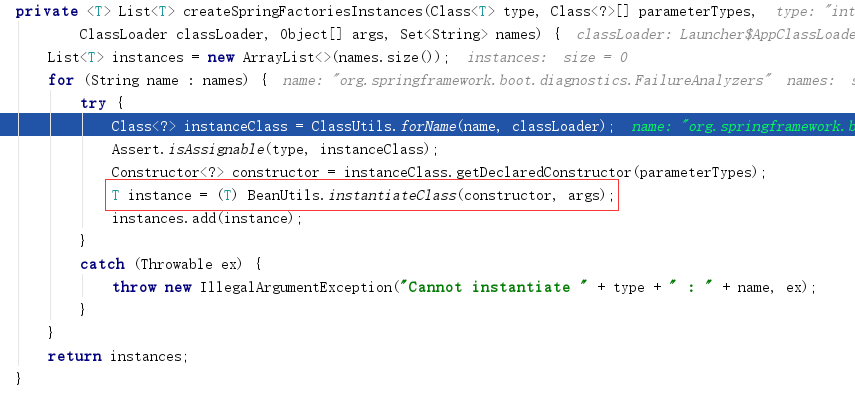
5、进入FailureAnalyzers类的构造函数
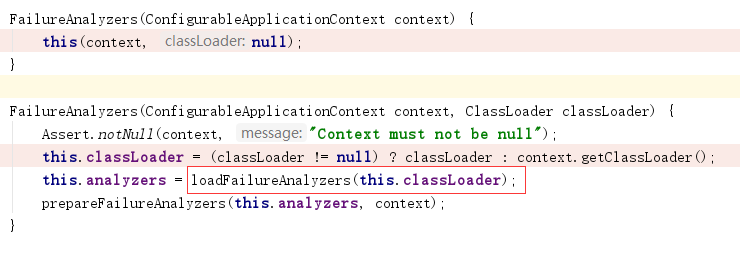
6、然后进入loadFailureAnalyzers方法。获取analyzerName,遍历analyzerNames,增加到analyzers变量中

有以下几个analyzerNames
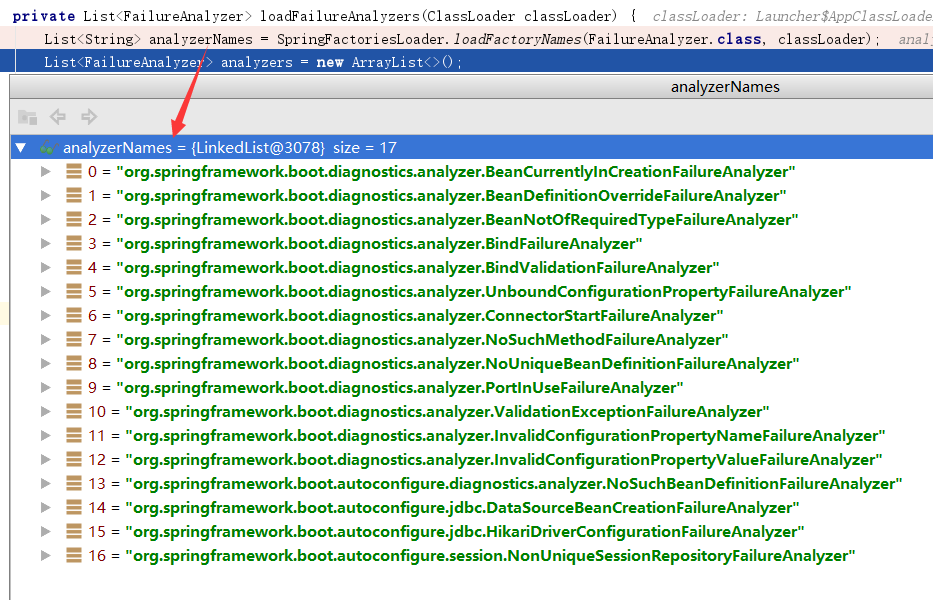
6、下面模拟异常实战
1) 我们将端口改为808080808,然后启动项目

2) 运行到checkPort抛出异常

3) 抛出异常后,run方法里处理异常
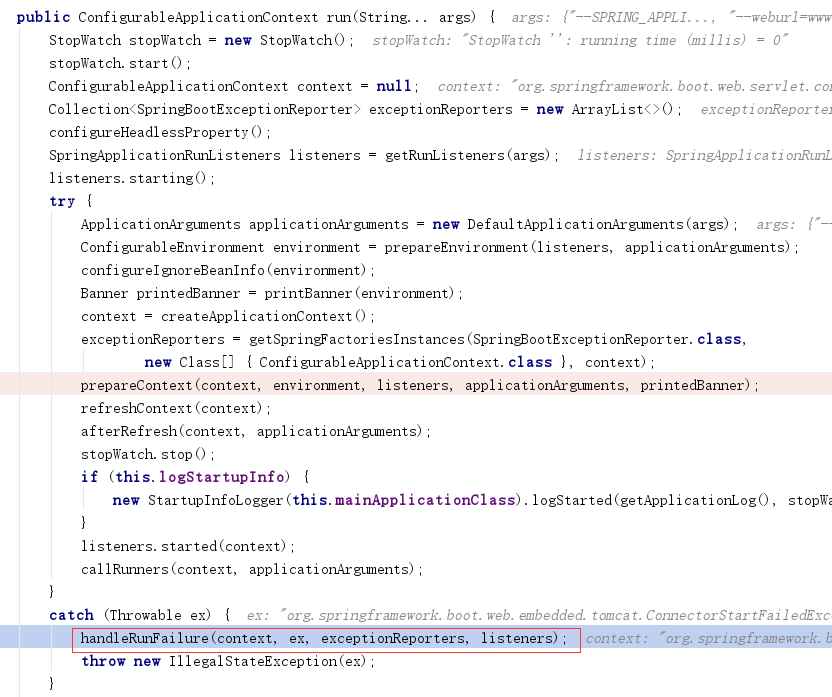
4) 进入handleRunFailure方法

首先进入handleExitCode方法
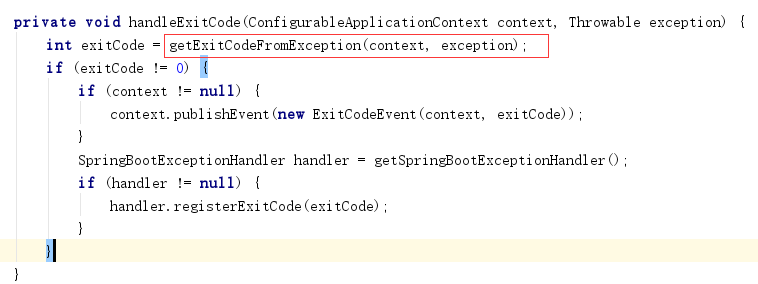
这里exitCode返回0
然后listeners不为空,发送failed广播
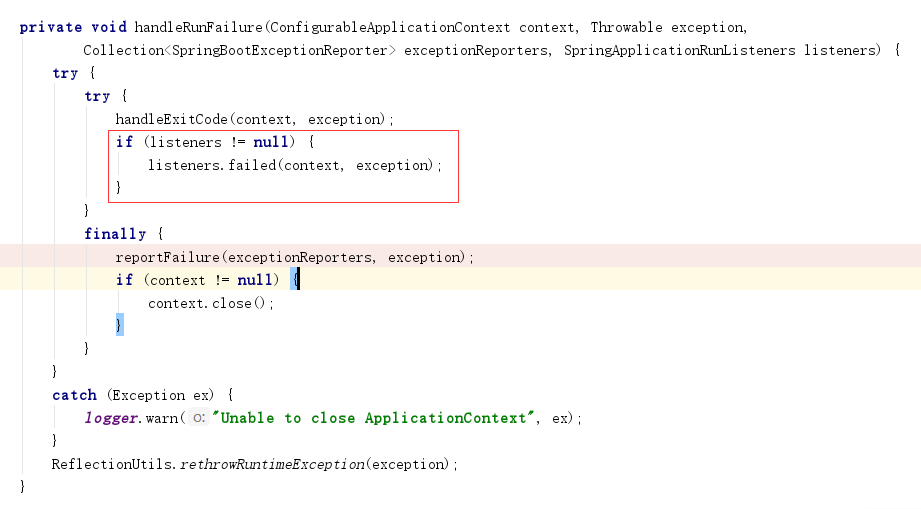
5) 进入reportFailure方法

6)然后调用context.close方法
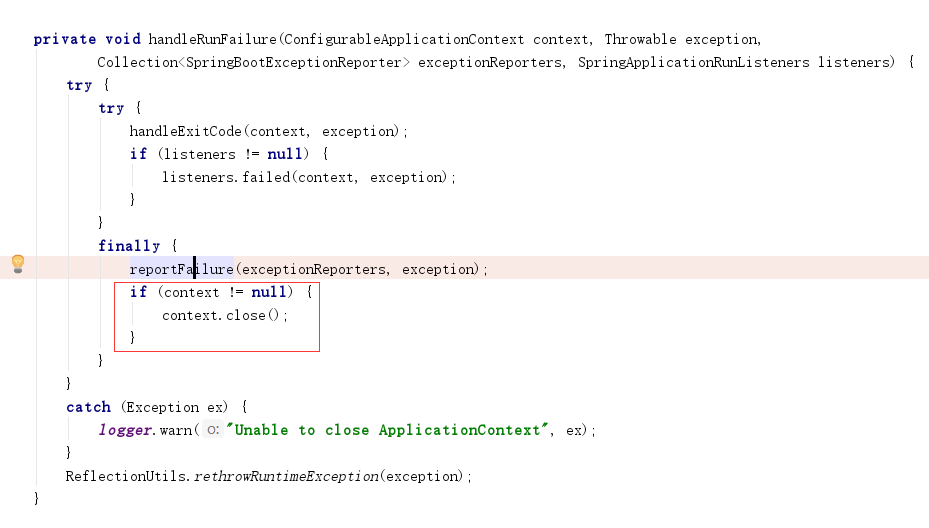
close方法先调用doClose方法,然后移除钩子方法。

doClose方法。发布shoutdown广播,关闭一些bean和工厂bean,方便垃圾回收。
protected void doClose() {
// Check whether an actual close attempt is necessary...
if (this.active.get() && this.closed.compareAndSet(false, true)) {
if (logger.isDebugEnabled()) {
logger.debug("Closing " + this);
}
LiveBeansView.unregisterApplicationContext(this);
try {
// Publish shutdown event.
publishEvent(new ContextClosedEvent(this));
}
catch (Throwable ex) {
logger.warn("Exception thrown from ApplicationListener handling ContextClosedEvent", ex);
}
// Stop all Lifecycle beans, to avoid delays during individual destruction.
if (this.lifecycleProcessor != null) {
try {
this.lifecycleProcessor.onClose();
}
catch (Throwable ex) {
logger.warn("Exception thrown from LifecycleProcessor on context close", ex);
}
}
// Destroy all cached singletons in the context's BeanFactory.
destroyBeans();
// Close the state of this context itself.
closeBeanFactory();
// Let subclasses do some final clean-up if they wish...
onClose();
// Reset local application listeners to pre-refresh state.
if (this.earlyApplicationListeners != null) {
this.applicationListeners.clear();
this.applicationListeners.addAll(this.earlyApplicationListeners);
}
// Switch to inactive.
this.active.set(false);
}
}
钩子方法。
在JVM退出时,调用这个方法
public static void main(String[] args) {
System.out.println("hello");
Thread close_jvm = new Thread(()-> System.out.println("close jvm"));
Runtime.getRuntime().addShutdownHook(close_jvm);
System.out.println("world");
}
运行结果如下:
hello world close jvm
6) 最终进入FailureAnalyzers类的reportException异常
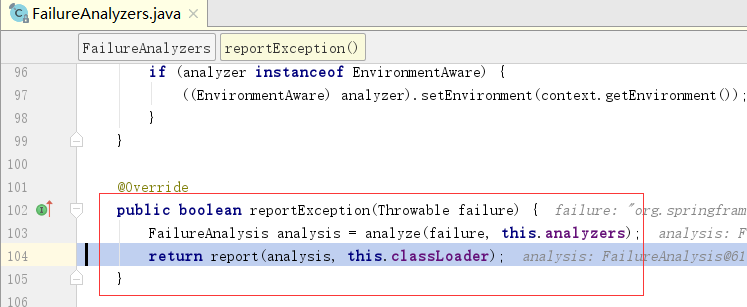
7) 进入report方法

8) 最终进入LoggingFailureAnalysisReporter方法,打印异常

9) 异常信息如下:

7、自定义异常报告
1)、创建自定义报告异常类
public class MyExceptionReporter implements SpringBootExceptionReporter{
private ConfigurableApplicationContext context;
public MyExceptionReporter(ConfigurableApplicationContext context) {
this.context = context;
}
@Override
public boolean reportException(Throwable failure) {
if(failure instanceof UnsatisfiedDependencyException){
UnsatisfiedDependencyException exception = (UnsatisfiedDependencyException)failure;
System.out.println("no such bean " + exception.getInjectionPoint().getField().getName());
}
return false;
}
}
2) 模拟异常 创建Solid类
public class Solid {
}
然后引入Solid

这样引用肯定会抛出异常
3) 运行程序。错误输出如下

作者:Work Hard Work Smart
出处:http://www.cnblogs.com/linlf03/
欢迎任何形式的转载,未经作者同意,请保留此段声明!

